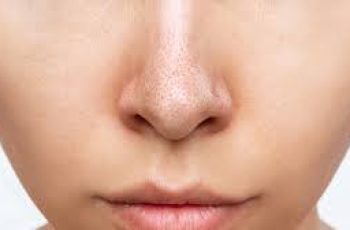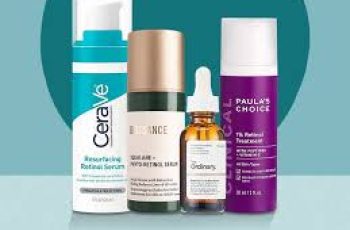Can Retin A and Mandelic Acid be used together?
I admit that skin care can be very confusing at times. Some ingredients require a team player to work, others should be avoided altogether, and finally, others can produce results alone or in combination with another powerhouse. So what happens when Retin A and Mandelic Acid are used together? That’s what we want to learn today, but before we answer your question, let’s quickly summarize how these powerhouses work.
What is Mandelic Acid?
It is extracted from bitter almonds and is an alpha hydroxy acid (AHA). It is often found in exfoliating products and used in professional treatments such as chemical peels and facials.
Its larger molecular size, twice that of glycolic acid, makes it gentle enough for those with sensitive skin.
Mandelic acid is gentle on the skin because it penetrates the skin slowly, reducing the risk of irritation, redness, and severe dryness.
It works on the surface of the skin to remove accumulated dead skin cells, dirt, bacteria, and debris that can cause blemishes and breakouts.
It helps reduce fine lines, wrinkles, and loss of elasticity by boosting collagen production.
Targets areas of hyperpigmentation, dark spots and age spots to even out skin tone.
If you want to learn more about mandelic acid, read our dedicated blog post.
What is Retinol A?
Retinol A, also known as tretinoin, is a form of vitamin A that is synthetically formulated from a variety of effective products.
It should only be applied to the skin at night, as exposure to UV rays can affect how retinol works on the skin.
It must be slowly incorporated into your daily routine, applying a small amount 2 to 3 times a week, alternating between night and day to avoid over-irritation.
Reduces the appearance of fine lines, wrinkles and other signs of aging.
Speeds up the rate of natural cell turnover of the skin, removing dead facial skin cells and bringing new, fresh cells to the surface.
Helps boost collagen production for plump, firm, youthful and elastic skin.
Helps thicken the skin so it can better protect itself from free radical damage.
Visit The Beauty Insiders for more information on Retin A and its effects on the skin.
Is Retinol better than Mandelic Acid?
The answer to this question depends on what you want to achieve for your skin. Retinol is hailed as one of the most effective anti-aging ingredients. Mandelic acid is considered best for fighting acne and blemishes as well as hyperpigmentation. You might be surprised to learn that you can actually use both ingredients in your skincare routine, but more on that later!
Another factor you need to consider is your skin type. Retinol and other forms of vitamin A are not suitable for those with dry skin types that tend to be sensitive. This is where mandelic acid comes into play and it is best used in a daily skincare routine. For other skin types, retinol works effectively if used correctly, i.e. slowly working it into the skin during an evening skincare routine.
While each ingredient affects the skin differently, both can increase photosensitivity due to their exfoliating effects and faster skin cell turnover, so using a sunscreen with SPF 50 every day is essential to ensure your skin is protected from further sun damage.
Can I mix mandelic acid with retinol?
Yes, you certainly can, but you need to be careful to avoid over-irritating your skin. The easiest and most effective way to use retinol and mandelic acid together is to rotate them on your skin. Since retinol is sensitive to UV radiation, it is best to use mandelic acid in your morning skincare routine. If you use retinol in your evening routine, the skin has enough time to rebalance its pH and prepare for the next step in your treatment. If this method doesn’t work for your skin, or you want to avoid using two active ingredients on the same day, you can alternate the nights you use the active ingredients.
How many times a week should you use mandelic acid?
The percentage of mandelic acid determines how often you can use it in a week. If the formula is a serum with 10% or more, many dermatologists recommend using it only 2-3 times a week. However, there are many different products that are rich in this acid, from cleansers, toners, serums to moisturizers. For different product formulas, you may notice that the percentage of mandelic acid may vary. What I mean is that cleansing products usually have lower levels, so they are less effective. Plus, they rinse them off the skin, which means they don’t cause irritation.
How to use mandelic acid in your daily routine?
This comes down to formulating with mandelic acid, because there is a correct way to use skincare products. The basic skincare rule is to start with the thinnest consistency and go to the thickest. As I mentioned, mandelic acid is found in many skincare products, so it’s important to pay attention to which product contains this active ingredient. For example, if the product is thin, such as if you use a cleanser, you must apply it to the skin before your serum or moisturizer. When you apply the thicker product first, you create a physical barrier on the skin that prevents the active ingredients in the thinner formula from penetrating the skin. By applying from thinnest to thickest, you can ensure that each active ingredient is absorbed by the skin and works effectively without any effort.
Below is more information about Retinol A and Mandelic Acid and how to use them together in your daily routine. Feel free to contact us if you have any questions and learn more on our Instagram.
DQH Knowledge drop: In your 20s, your skin cell turnover decreases. (Cell turnover is a key component in keeping your skin youthful.) You know what else slows down? Your collagen production. Starting in your 20s, collagen decreases by about 1 percent per year. Should you want to prevent fine lines and wrinkles, start by eliminating behaviors that contribute to premature aging. “If it’s bad for you, it’s bad for your skin,” says dermatologist Michel Somenek.
“Cigarette smoking reduces blood flow to the skin and causes premature wrinkling and a dull skin texture. Making the repeated pursed motion to inhale can also cause smoker’s lines. Alcohol and recreational drugs are toxins for the skin that damage its cellular structure and DNA,” Somenek tells us. “The faster you eliminate vices while you are young, the better chance your skin and body have to recuperate.” Also, adopting an anti-aging routine in your 20s is key. After all, the best offense is a good defense. We spoke to Somenek and experts Joshua Ross and Audrey Kunin to find out more.
Keep reading for the best anti-aging products for your 20s, according to skincare professionals.
Sunscreen
“We all know that the sun is the number one cause of skin aging and starting the prevention in your 20s is very important,” Ross says. “The majority of your sun damage won’t start to appear until you’re in your 30s, so don’t wait until you see it surface or you’ll be behind the curve. Stay ahead of it with a good-quality zinc-based sunscreen worn daily.”
Farmacy Green Defense Daily Mineral Sunscreen
An invisible sunscreen with SPF 30, plus botanical extracts meant to protect skin with tons of antioxidants. Bonus: It’s clean and fine to use under makeup.
Bareminerals Complexion Rescue™ Tinted Moisturizer Broad Spectrum SPF 30
Although we recommend you use your SPF and moisturizer separately, we also understand moments when you don’t have time or energy for that extra step. For those times, this bareMinerals moisturizer is a great thing to have on hand.
Vitamin C Serum
“A great introduction to anti-aging is to start with a vitamin C serum in your morning skincare routine,” Ross says. “It’s a powerful antioxidant that will neutralize free radicals and brighten the skin.” He adds that it’s a great way to counteract the effects of the sun’s harmful rays, which, as previously mentioned, are among the biggest causes of premature aging.
Drunk Elephant C-Firma™ Vitamin C Day Serum
The Drunk Elephant C-Firma is a lightweight serum that promises to give skin a glow by combining the brightening powers of vitamin C with ferulic acid, l-ascorbic acid, and vitamin E. The included sodium hyaluronate is meant to replace hydration loss, so you shouldn’t have to deal with any irritation.
Sunday Riley C.E.O. Rapid Flash Brightening Serum
This potent serum is jam-packed with vitamin C (15 percent, to be exact), which means it’s a potential superstar at both brightening skin and dousing it in antioxidants.
Peptides
Using peptides on your skin has many benefits, says Somenek. “The skin barrier is what defends the body against pollution, UV rays, bacteria, and toxins. It can be damaged by several everyday factors. Using topical peptides aids in building a stronger barrier,” he says. “Peptides comprise elastic fibers, which are a type of protein. These fibers help to make skin appear taut and firm. Peptides can also help repair damaged skin, relieve inflammation, and even out skin tone. Some peptides can kill acne-causing bacteria that is common in 20-somethings.”
Kunin agrees, saying, “Peptides are an excellent entry point for supporting collagen.” She recommends looking for face and eye treatments that contain these collagen-boosting powerhouses.
Charlotte Tilbury Magic Eye Rescue Cream
This Charlotte Tilbury super-emollient eye cream has a base of coconut oil and shea butter (read: it’s incredibly hydrating). Botanicals plus peptides are meant to help reduce dark circles and boost collagen, respectively.
This creamy moisturizer serves up potent collagen-boosting peptides and pycnogenol, and antioxidant-rich vitamin C. “Instead of sitting on top of the skin, peptides penetrate the outer layer so they go deep. The ‘signals’ they send tell the cells to produce elastin and collagen, which are needed for youthful-looking skin,” explains Somenek.
At-Home Peel Pads
Remember that skin cell turnover fiasco we talked about earlier? One way to help support it is by exfoliating. “Exfoliation is important to help keep skin fresh and luminous,” Kunin says. She recommends using at-home peel pads as an easy and effective way to exfoliate.
“The goal in your 20s is to fight the slowing pace of cell turnover. It is wise to use products that gently exfoliate, yet still remove oil and other impurities. Products that have Alpha Hydroxy Acids (AHA) or Beta Hydroxy Acids (BHA) are a good choice.”
According to Somenek, you should only exfoliate two to three times a week. “People of all ages are guilty of over-exfoliating and that can be too much of a good thing,” he says.
Dermadoctor Kakadu C Intensive Vitamin C Peel Pad
A few swipes of this Derma Doctor powerful peel pad promise to leave your skin glowing and smooth, thanks to the seven (yes, seven) types of chemical exfoliants, including AHA and BHA. It also contains vitamin C via Kakadu plum extract for added brightening and antioxidant protection.
KEY INGREDIENTS Kakadu plum extract is sourced from the Kakadu plum, a fruit grown in northern Australia. It contains vitamin C, which restores the skin’s natural barrier, increases collagen production, and soothes irritation.
Dr. Dennis Gross Skincare Alpha Beta® Universal Daily Peel Pads
These are the gold standard of peel pads, with a cult following and over 900 five-star reviews on Sephora. They’re easy to use and contain a blend of anti-aging exfoliating acids.
Emollient Night Cream
“In your 20s, you need to start upping the hydration in your skincare routine. You may have been cautious of over-moisturizing because of acne in your teens, but as you enter your 20s, your skin transitions and becomes drier,” Ross says. “I recommend an emollient night cream added into your evening skincare regimen.”
“Twenty-somethings need to make sure that they are not using creams that will clog their pores and cause excess oil production,” says Somenek. Opt for non-comedogenic products.
Cerave Skin Renewing Night Cream
One great choice is the CeraVe Skin Renewing Night Cream, which is a non-comedogenic night cream that leaves skin soft and glowy. It combines the moisturizing powers of ceramides and hyaluronic acid.
RoC Retinol Correxion Max Hydration Creme
“The best night cream ingredients contain retinol, benzoyl peroxide, and/or salicylic acid or hyaluronic acid. The goal is to moisturize, yet remove excess oil,” says Somenek. This Roc Retinol Correxion cream fits the bill as it contains both hyaluronic acid and retinol so it promises to moisturize while also being non-comedogenic.



